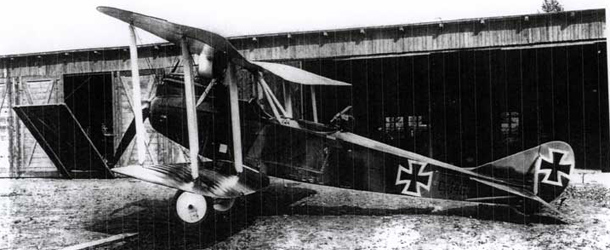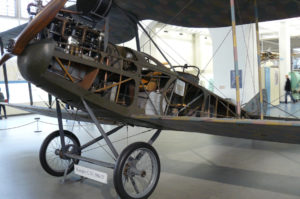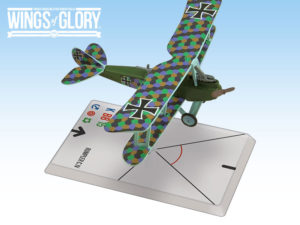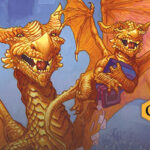The single-engine, two-seat reconnaissance biplane Rumpler C.IV is one of the new aircraft featured in the latest series of WW1 Wings of Glory Airplane Packs. The history of this plane is an example of the frequent German practice of starting with one aircraft design and refining it model by model. This practice, probably most familiar in the Albatros fighter series, where the D.Va is clearly an evolution from the original D.I design, was adopted by the Austrian engineer Edmund Rumpler, whose company had mainly been building copies of the Etrich Taube monoplane, and designed his own biplane two-seaters. .
The Rumpler C.I first appeared in 1915. It was a clean, stable design with easy flying characteristics that were appreciated by pilots and saw the plane still in use as a trainer in the last days of the war. Improvements in the engine and control surfaces produced the C.III, which improved many elements from the C.I but was limited in production, because a better engine became available shortly after the C.III went into production. The Rumpler C.IV was a great success, to the point that licensed copies were produced by several other German factories.
The plane combined fine handling abilities, good visibility, and excellent “ceiling” with fairly good speed. C.IVs could fly missions at or above 21,000 feet (over 6000 meters) and many Allied fighters had difficulty reaching them that high. While Rumpler would continue to make improvements, especially in “ceiling,” the C.IV remained in use throughout the war, with over 2000 built (one of the largest productions of a 2-seater type in the entire German air force).
The Rumpler C.IV served on the Western Front, Italy, and Palestine (the planes attacking the Arab camp in the movie “Lawrence of Arabia” are reproductions made to look like Rumpler C.IVs.) After the war, some Rumpler C machines were converted and used for passenger flights.
Only two of the original Rumpler C.IV survive to this day, one of them can be seen at the Deutsches Museum, in Munich, Germany. It’s an aircraft manufactured by the Bayerische-Rumpler-Werke AG (Baru) in Augsburg and restored in 1977.
Rumper C.IV in Wings of Glory
The Rumpler C.IVs presented in the Wings of Glory Airplane Packs feature three different paint schemes, with planes used by the Luftstreitkräfte FA7 (serial number 8231) and Luftstreitkräfte FA(A) 235 (serial number 8256) units, both flown by unkown pilots, and the FA 209, flown by Lt.Ziegert.
The first model featured was a Rumpler C.IV used by Flieger-Abteilung 7, a unit set up on January 1917, from FFA 7 2nd / Flieger-Bataillon Nr. 1, in Döberitz. This model, with serial number 8231/17, shows the colorful hex pattern that was produced by the fabric factories. It includes the special cards “Photo Expert” and “Precision Bomber”, which make it a better bomber, as well as the “Good at Escaping” which gives it more chances to succeed at reconnaissance missions.
The FA(A) 235 model is a good example of a plane that began front line service in early 1917 and was still in general use at the end of the war. Fliegerabteilung 235 (Artillerie) was established from AFA 235, operating in the West Front. The special cards coming with this version allow players to include “rookie” crew members to balance scenarios and expand the game options – “Rookie Pilot” and “Rookie Observer", plus a “Strong Constitution” card to help off-set the negatives.
Flieger-abteilung 209 A was an observation and recon unit, primarily focused on working with artillery. It was engaged on the Western front and active in the operations around Verdun (certainly an artillery battle). This model includes special cards for a “Technical Eye”, “Perfect Bombardier” and the jam-resistant advantage of the “Bullet Checker”.
Information sources: Deutsches Museum, Frontflieger, Wikipedia, "German Aircraft of the First World War", Gray, Peter and Thetford, Owen (Putnam, 1962), "Aircraft of World War I", Munson, Kenneth (Ian Allan, 1967), "Bombers, Patrol and Reconnaissance Aircraft 1914-1919", Munson, Kenneth. *Zandcee, April 2012 [CC BY-SA 3.0]












Follow Us on